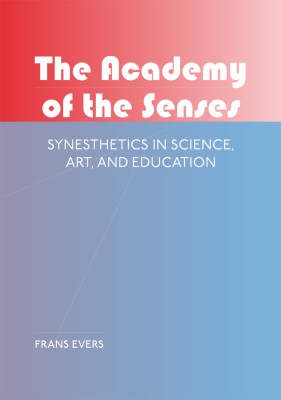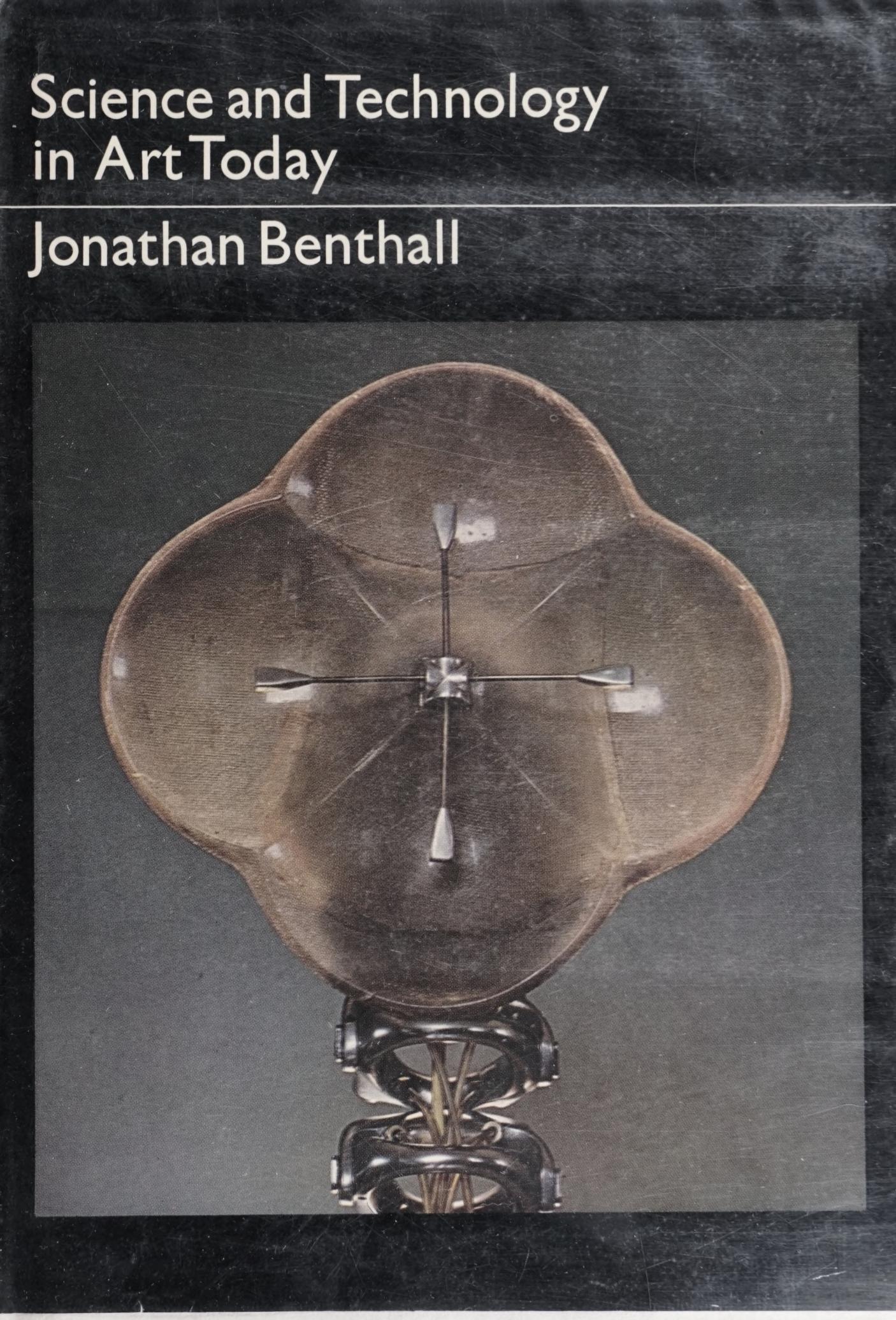Frans Evers: The Academy of the Senses: Synesthetics in Science, Art, and Education (2012)
Filed under book | Tags: · art and science, art education, art history, education, electronic music, media art, remediation, science, sound, synaesthesia, theatre

“Frans Evers’s The Academy of the Senses is a book wanting to be three books at once. A study of the scientific approaches to synesthesia, related to the psycho-physical research conducted by Evers during his studies at the university; an alternative art history of the twentieth century based on the double paradigm of Castel’s clavecin oculaire and Wagner’s Gesamtkunstwerk; and a full account of the genesis of the Interfaculty Image & Sound. To encompass this entire range of subject, Evers coined a new term, “synesthetics,” to denote the experience, creative force, and study of synesthesia.
Throughout his career, Evers profiled himself as an educational reformer. Together with electronic music pioneer Dick Raaijmakers, he started a series of projects and lectures exploring the interaction of music and fine arts, which culminated in the establishment of the first multimedia department in the Netherlands, the Interfaculty Image & Sound at the University of the Arts in The Hague, which Evers headed from 1989 until 2007. This book maps out the theoretical and artistic foundations of this educational reform project, as well as its synesthetic output: large multi-media performances such as a reworking of Anton Schoenberg’s Die Glückliche Hand, Mondrian’s Promenoir, and Scheuer im Haag.
The Academy of the Senses is a “source book,” a work of inspiration, rather than a rigid account of historical facts. It provides anyone with an interest in the wondrous realm of multimedia arts and synesthesia as a creative force, whether student or professional, an introduction into the foundations and extensions of seeing sound and hearing colors throughout the centuries.”
Compiled and edited by Vincent W.J. van Gerven Oei
Publisher ArtScience Interfaculty Press, University of the Arts, The Hague, 2012
ISBN 9789461908193, 9461908199
298 pages
via editor
Review: Matteo Marangoni (Neural, 2013).
PDF (19 MB)
Comment (0)Jonathan Benthall: Science and Technology in Art Today (1972)
Filed under book | Tags: · art and science, art criticism, computer art, computing, holography, kinetic art, media art, photography, technology

An early treatise on art, science and technology based on the series of articles written for Studio International.
Publisher Praeger, New York, 1972
180 pages
Review: John H. Holloway (Leonardo, 1975).
PDF (46 MB)
See also Jonathan Bentham’s Technological Art and Studio International‘s Eclectic Vanguardism, 2017.
Interdisciplinary Science Reviews 42(1-2): The Experimental Generation (2017)
Filed under journal | Tags: · 1950s, 1960s, art and science, art history, experimental art, technology, united kingdom

“This special double issue of ISR came out of the conference The experimental generation: networks of interdisciplinary praxis in post war British art (1950–1970) we organized together in 2014, exploring an apparent convergence of interest in art and science around the notion of social responsibility in the 1960s. …
It is rarely recognized that Cambridge was something of a hotbed of interdisciplinary exploration in the 1960s. Within this issue we seek to bring some of the leading figures behind this into the foreground, from the Language Research Unit led by Margaret Masterman to the Centre for Land Use and Built Form Studies created by Leslie Martin in the Architecture Department. Cambridge was, after all, where C.P. Snow (re)ignited the ‘Two Cultures’ debate in 1959; where two key figures in cybernetics and systems theory, Gordon Pask and Robin McKinnon-Wood, met as undergraduates, founded their company ‘System Research’ and developed their first early computers. Ian Sommerville, the precocious mathematician who invented the ‘Dreamachine’ with Bryon Gysin was an undergraduate at Trinity College when he invited Gustav Metzger to give his first public lecture/demonstration on Auto-Destructive Art for the Heretics Society in 1960. In 1964, St Catharine’s College, Cambridge, played host to the ‘First International Exhibition of Concrete, Kinetic and Phonic Poetry’ initiated by a young academic in the English department, Michael Weaver who gathered together over 60 works by poets and artists from 14 countries for a week’s exhibition in a Cambridge college. He worked closely with Reg Gadney, Philip Steadman and Stephen Bann who co-edited a formative issue of IMAGE magazine, on Kinetic Art: Concrete Poetry in November 1964. Steadman, Weaver and Bann went on to launch Form (1966–1969).
As a founder member of the Cambridge University Artists Group, Gadney was instrumental in spreading knowledge of Kinetic Art methods and techniques through articles in the student magazine Granta as well as the London Magazine. In 1965 Metzger was invited back to Cambridge to deliver his ‘Chemical Revolution in Art’ lecture attended by Bann, Gadney and Steadman. In his article for this journal Professor Stephen Bann looks back at the art and ideas that informed his book Experimental Painting, published in 1970, which took developments in art of the previous decade as its subject.
This issue spotlights a period that is still within living memory, and still reverberates today. In encouraging such a diversity of articles we have followed our instincts as curators rather than historians. We have gathered together a constellation of voices, from pioneers to emerging scholars, in order to encourage and facilitate unanticipated connections.” (from the Introduction)
Edited by Bronać Ferran and Elizabeth Fisher
Publisher Institute of Materials, Minerals & Mining, London, 2017
ISSN 0308-0188
224 pages
PDF (33 MB)
Comment (0)
